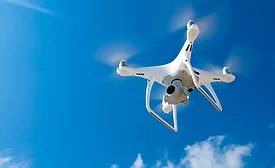Adam Stone
Adam Stone is a contributing writer for Security magazine. He has covered IT issues in the public and private sectors for more than 20 years. In addition to following security trends, he writes on military technology, education-tech, government IT and diverse others issues.
ARTICLES
Special Report
What it takes to secure crowds in an unpredictable world.
Read More
Security Strategy
Stronger together: How security executives build solid teams
Fostering connection among security teams and empowering employees helps security executives build strong departments.
July 12, 2023
Special Report
How banks elevate security in the modern threat landscape
Security leaders in the banking sector use a combination of technology, training and risk management to mitigate today’s threats.
April 3, 2023
Security Programs
Leveraging K-9 capabilities within security
Implementing K-9 security programs requires taking a look at the individual organization’s needs, end goals and budget.
February 3, 2023
Leveraging non-traditional experience to drive your security career
Security professionals can cross-market skills from life experiences and other professional positions to excel in the security industry.
November 14, 2022
Special Report
Securing the perimeter in manufacturing and distribution
With large campuses and high vehicle traffic, manufacturing and distribution facilities require a layered approach to securing the perimeter.
August 1, 2022
Security Strategy
Striking the balance: How visible should campus security be?
Four security leaders talk strategies for finding the right level of visibility for effective safety and security operations within higher education.
June 10, 2022
Special Report
How to bring a virtual GSOC to life
By preparing security operations centers for remote connectivity, security leaders can increase reach, productivity and efficiency.
April 1, 2022
Drones as security tools
Unmanned aircraft can provide enterprise security teams with a number of potential use cases, including improving incident response, investigations and more.
November 19, 2021
The balancing act of campus perimeter security
Keeping higher education environments open and secure is a balancing act that requires security leaders to regularly evaluate risk and the organization’s goals.
September 10, 2021
Sign-up to receive top management & result-driven techniques in the industry.
Join over 20,000+ industry leaders who receive our premium content.
SIGN UP TODAY!Copyright ©2025. All Rights Reserved BNP Media.
Design, CMS, Hosting & Web Development :: ePublishing









